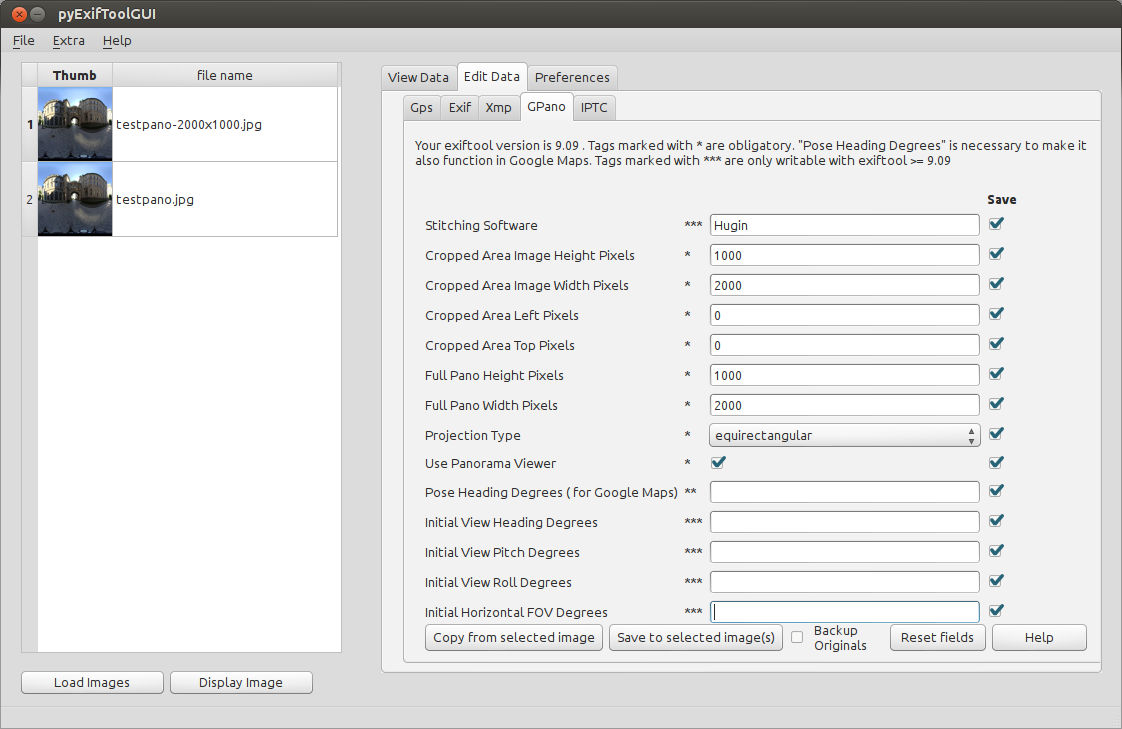
Furthermore, if an image contains exif data relating to GPS information, it can be geolocated on Google Maps.

Images can also be rotated clockwise or counterclockwise. In this project the goal is to have an image viewer and for each image to have the possibility to extract the exif data. The only file formats that can handle EXIF are JPEG and TIFF (regarding pictures), which means that you cannot read the data from other image formats such as GIF and PNG.ĮXIF data is embedded in the physical file, and specific tools that are capable of reading this information must be used to view it. It is capable of storing such important data as: This information is also know as “metadata”. You can also choose a local GPS log file and write the geotag information to the selected pics.ĮXIF data like camera make and model, copyright or artist name can also be specified, along with setting up GPano tags and lens details (focal length, maximum aperture or metering mode).Īll in all, pyExifToolGUI is a neat utility that can be successfully used by all those who considered ExifTool to require too much PC knowledge to operate.Exif and Image Viewer General Introduction to ExifĮxchangeable image file format, also known as Exif, is a standard the defines specific information related to an image or other media captured by digital cameras (including smartphones or tablets). More precisely, you can modify or enter the latitude and longitude that you prefer, while also getting the possibility to define the XMP/IPTC location. If you are not satisfied with the metadata stored within your digital images, you can alter the data as you see fit. As such, you can analyze info like width and height, orientation, camera model, exposure time, GPS tags or focal length. Once you click any of your added pictures, pyExifToolGUI automatically displays all the detected metadata, such as EXIF, XMP, IPTC, GPS/Location, GPano, ICC profile and makernotes. The source formats include not only common filetypes, such as BMP, JPG, PNG or TIFF, but also RAW ones, like ARW, CR2, DNG, RAF, XCF and many others. You need to take some time to add one or more images by browsing to their location since drag and drop actions are not supported. Once this step has been completed, you get to benefit from the functions of ExifTool packed within a straightforward graphic interface, regardless of your skill level.

In other words, you first need to make sure ExifTool is already stored on your PC, then specify its path in the Preferences tab. This application relies on the functions of ExifTool, a command-line utility that is used mainly by tech-savvy users. PyExifToolGUI is one of the apps you can turn to when you want to view these details, but also to modify them. When captured with a digital camera, photos store a wide range of information in their metadata, such as camera model, geographic coordinates, resolution and so on.


 0 kommentar(er)
0 kommentar(er)
